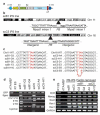piggyBac transposition reprograms fibroblasts to induced pluripotent stem cells
- PMID: 19252478
- PMCID: PMC3758996
- DOI: 10.1038/nature07863
piggyBac transposition reprograms fibroblasts to induced pluripotent stem cells
Abstract
Transgenic expression of just four defined transcription factors (c-Myc, Klf4, Oct4 and Sox2) is sufficient to reprogram somatic cells to a pluripotent state. The resulting induced pluripotent stem (iPS) cells resemble embryonic stem cells in their properties and potential to differentiate into a spectrum of adult cell types. Current reprogramming strategies involve retroviral, lentiviral, adenoviral and plasmid transfection to deliver reprogramming factor transgenes. Although the latter two methods are transient and minimize the potential for insertion mutagenesis, they are currently limited by diminished reprogramming efficiencies. piggyBac (PB) transposition is host-factor independent, and has recently been demonstrated to be functional in various human and mouse cell lines. The PB transposon/transposase system requires only the inverted terminal repeats flanking a transgene and transient expression of the transposase enzyme to catalyse insertion or excision events. Here we demonstrate successful and efficient reprogramming of murine and human embryonic fibroblasts using doxycycline-inducible transcription factors delivered by PB transposition. Stable iPS cells thus generated express characteristic pluripotency markers and succeed in a series of rigorous differentiation assays. By taking advantage of the natural propensity of the PB system for seamless excision, we show that the individual PB insertions can be removed from established iPS cell lines, providing an invaluable tool for discovery. In addition, we have demonstrated the traceless removal of reprogramming factors joined with viral 2A sequences delivered by a single transposon from murine iPS lines. We anticipate that the unique properties of this virus-independent simplification of iPS cell production will accelerate this field further towards full exploration of the reprogramming process and future cell-based therapies.
Figures




Comment in
-
Stem cells: Low-risk reprogramming.Nature. 2009 Apr 9;458(7239):715-6. doi: 10.1038/458715a. Nature. 2009. PMID: 19360075 No abstract available.
References
-
- Takahashi K, Yamanaka S. Induction of pluripotent stem cells from mouse embryonic and adult fibroblast cultures by defined factors. Cell. 2006;126(4):663–676. - PubMed
-
- Maherali N, et al. Directly reprogrammed fibroblasts show global epigenetic remodeling and widespread tissue contribution. Cell Stem Cell. 2007;1(1):55–70. - PubMed
-
- Okita K, Ichisaka T, Yamanaka S. Generation of germline-competent induced pluripotent stem cells. Nature. 2007;448(7151):313–317. - PubMed
-
- Meissner A, Wernig M, Jaenisch R. Direct reprogramming of genetically unmodified fibroblasts into pluripotent stem cells. Nat Biotechnol. 2007;25(10):1177–1181. - PubMed
Publication types
MeSH terms
Substances
Grants and funding
LinkOut - more resources
Full Text Sources
Other Literature Sources
Research Materials

